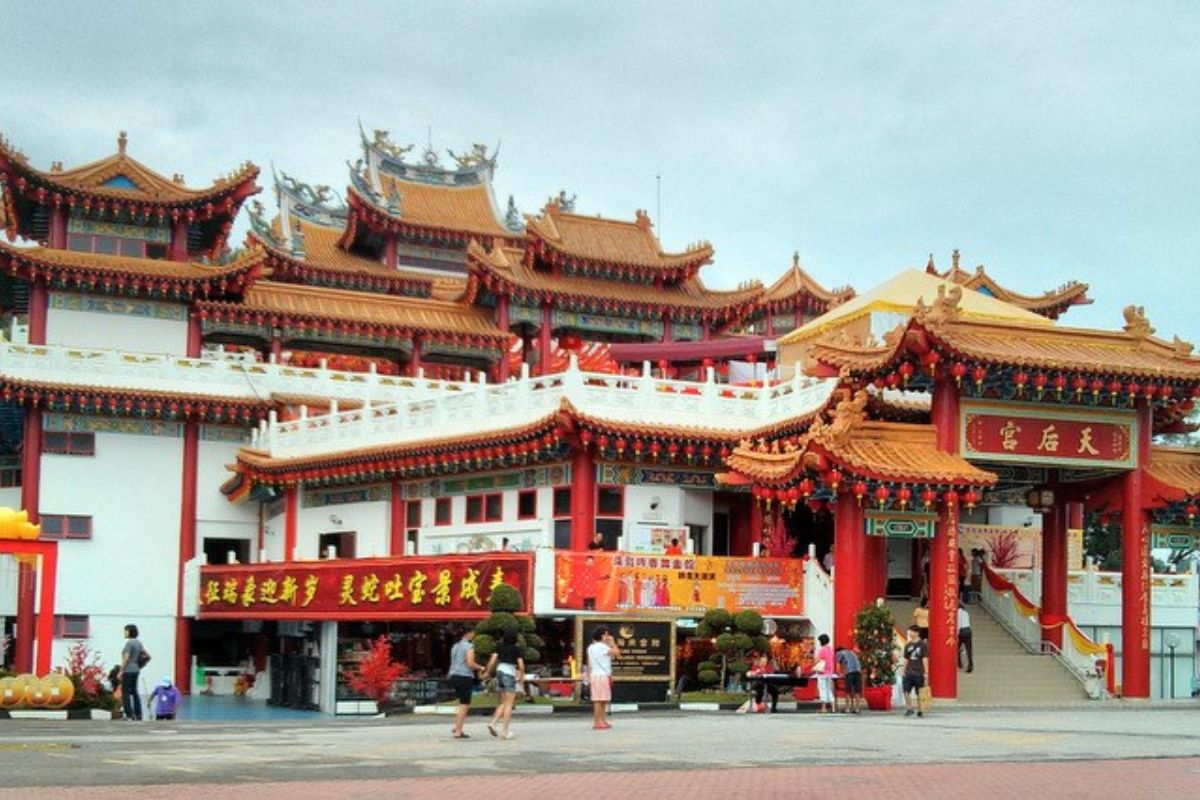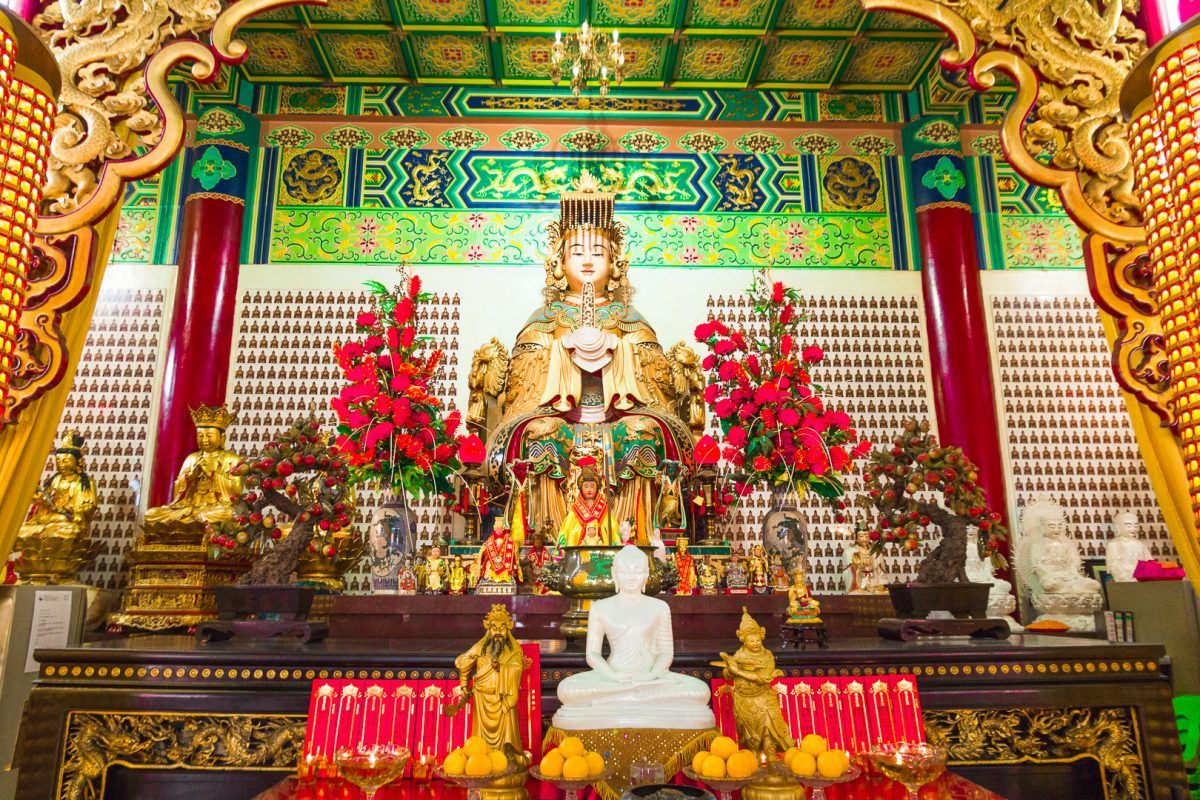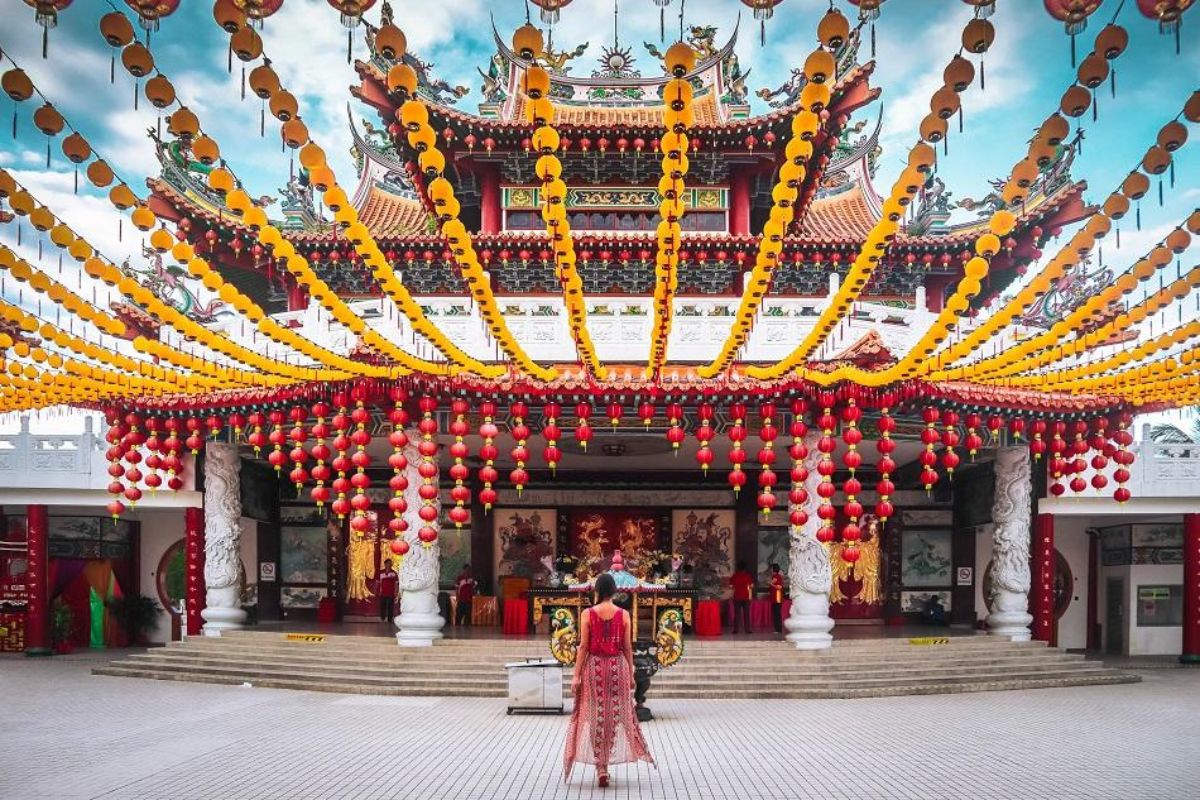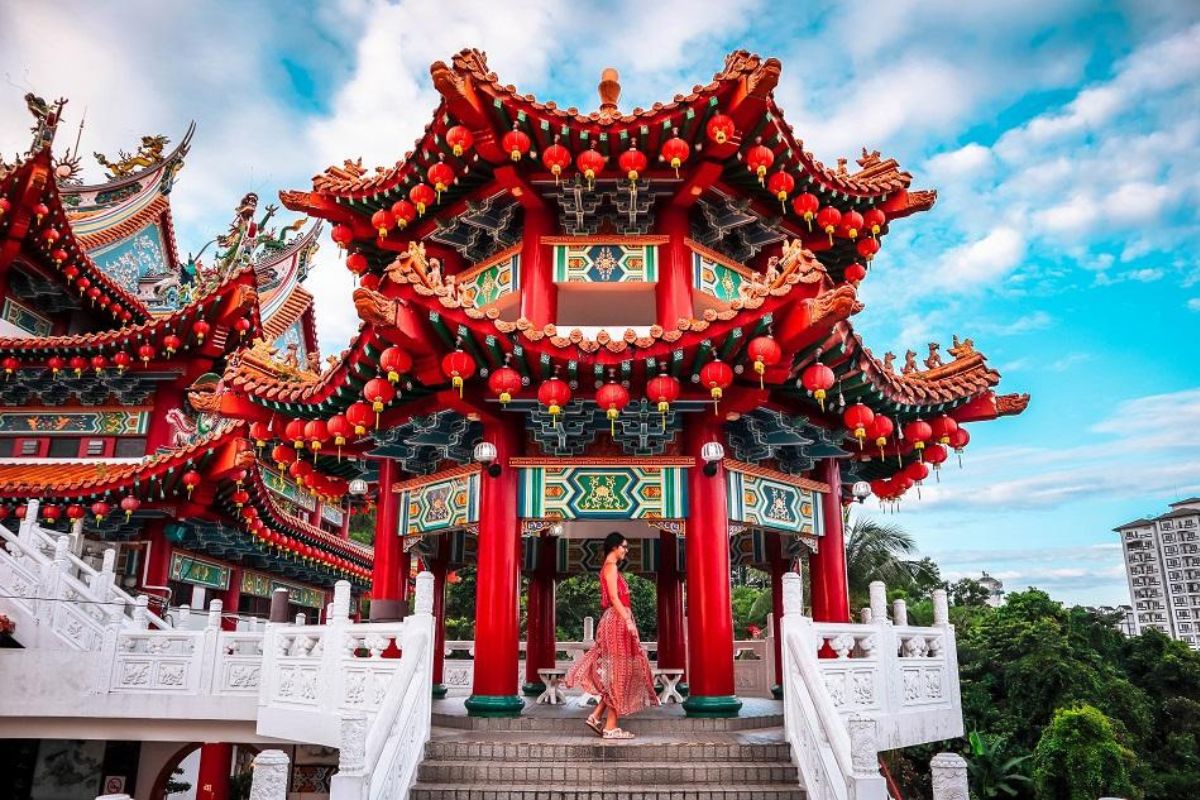Soaring majestically on Robson Heights in Kuala Lumpur, Malaysia, the Thean Hou Temple beckons visitors with its vibrant colors, ornate architecture, and rich cultural heritage. Dedicated to Mazu, the revered Chinese sea goddess, it stands as the largest spiritual structure dedicated to her in all of Southeast Asia, offering a captivating blend of religious significance, architectural beauty, and panoramic cityscapes. This article invites you to embark on a journey exploring the captivating essence of Thean Hou Temple, a landmark that transcends mere bricks and mortar, embodying the essence of cultural diversity and spiritual tranquility.

Photo: Bazan Travel
The story of Thean Hou Temple is supposed to be an inspiring testament to faith and community. Built between 1981 and 1987, the temple was spearheaded by the Hainanese community residing in Malaysia. Their dedication to honoring their cultural heritage and providing a spiritual haven for devotees of Mazu culminated in this architectural masterpiece. The temple’s design reflects a harmonious blend of Buddhist, Taoist, and Confucian traditions, showcasing the vibrant tapestry of Chinese culture in Malaysia.
Stepping onto the temple grounds, one is immediately struck by the vibrant red and gold hues that adorn the six tiers of the structure. Intricate carvings depicting mythical creatures and auspicious symbols adorn the facade, each detail imbued with meaning and cultural significance. As you ascend the steps, the majestic nine-dragon pillar, a powerful symbol of imperial authority and protection, welcomes you, guarding the entrance to the sacred ground.

Photo: Omnivagant
Within the temple, a sense of serenity envelops you. The air, filled with the gentle murmur of prayers and the soft chime of bells, invites introspection and reflection. The main hall, dedicated to Mazu, houses a magnificent statue of the goddess, depicted as a benevolent figure clad in flowing robes. Devotees light incense sticks and offer prayers, seeking blessings for safe journeys, good health, and prosperity.
Beyond the main hall, the temple reveals a treasure trove of cultural experiences. The Hall of the Heavenly Kings houses statues of these powerful deities, believed to guard the cardinal directions and protect humanity from misfortune. The Hall of Literature, adorned with intricate calligraphy and paintings, celebrates the importance of education and scholarly pursuits. These varied halls offer a glimpse into the diverse facets of Chinese culture, providing visitors with a deeper understanding of the beliefs and values cherished by the community.

Photo: Daily Travel Pill
However, the allure of Thean Hou Temple extends beyond its religious significance. The temple’s strategic location atop Robson Heights affords visitors breathtaking panoramic views of Kuala Lumpur. Whether bathed in the golden hues of sunrise or illuminated by the city’s twinkling lights at night, the vista from the temple terrace offers a memorable experience, capturing the essence of the city’s vibrant energy.
Thean Hou Temple transcends the boundaries of a religious site, serving as a cultural bridge between the past and present. It plays a crucial role as a testament to the enduring legacy of the Hainanese community in Malaysia, showcasing their faith, resilience, and artistic heritage. Moreover, the temple fosters cultural exchange, welcoming visitors from all walks of life. The multilingual signage and informational brochures ensure an enriching experience for international visitors, fostering understanding and appreciation for Chinese culture.
In conclusion, Thean Hou Temple has been likened to a beacon of cultural significance and spiritual tranquility in the heart of Kuala Lumpur. From its breathtaking architecture and intricate details to the serene atmosphere and captivating views, the temple offers a unique and enriching experience. Whether you are a spiritual seeker, a history buff, or simply seeking a breathtaking vista, Thean Hou Temple welcomes you to discover its captivating essence and embark on a journey of cultural exploration.

Photo: Daily Travel Pill

